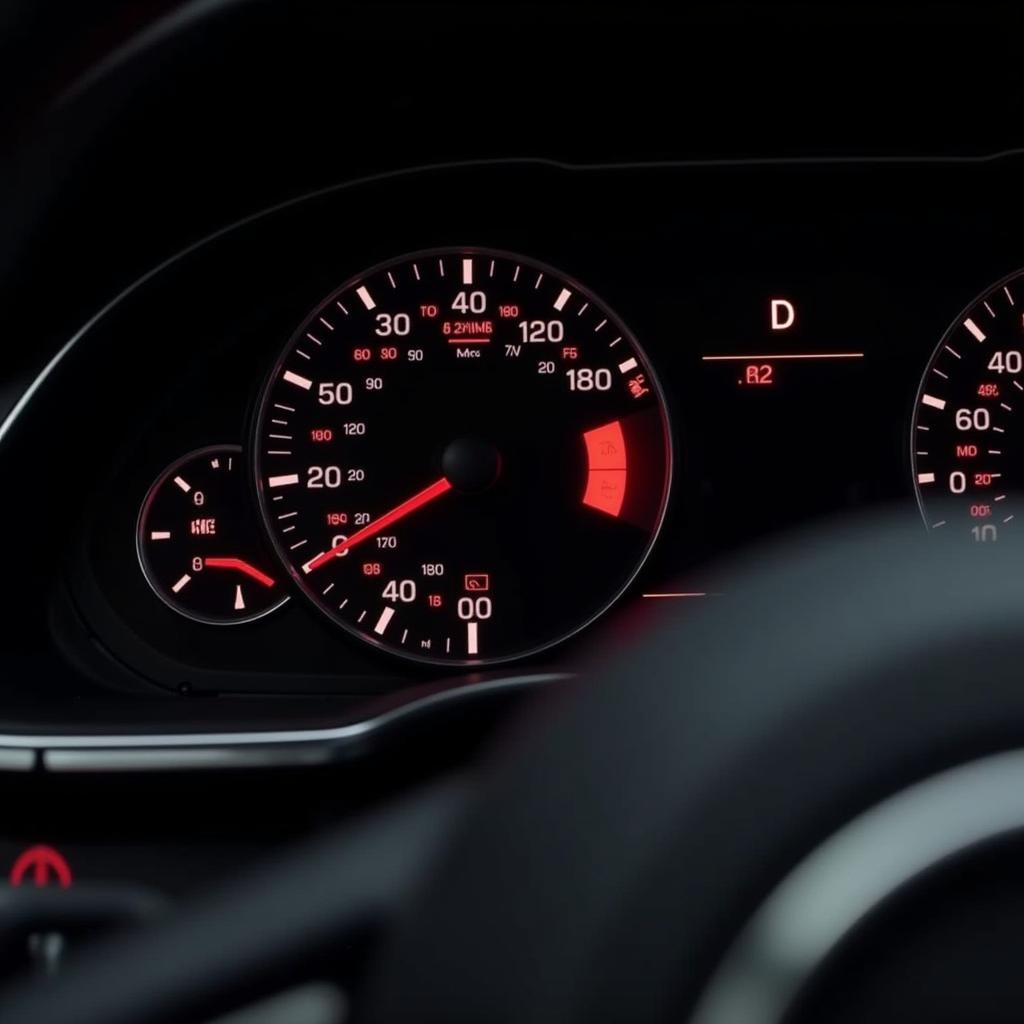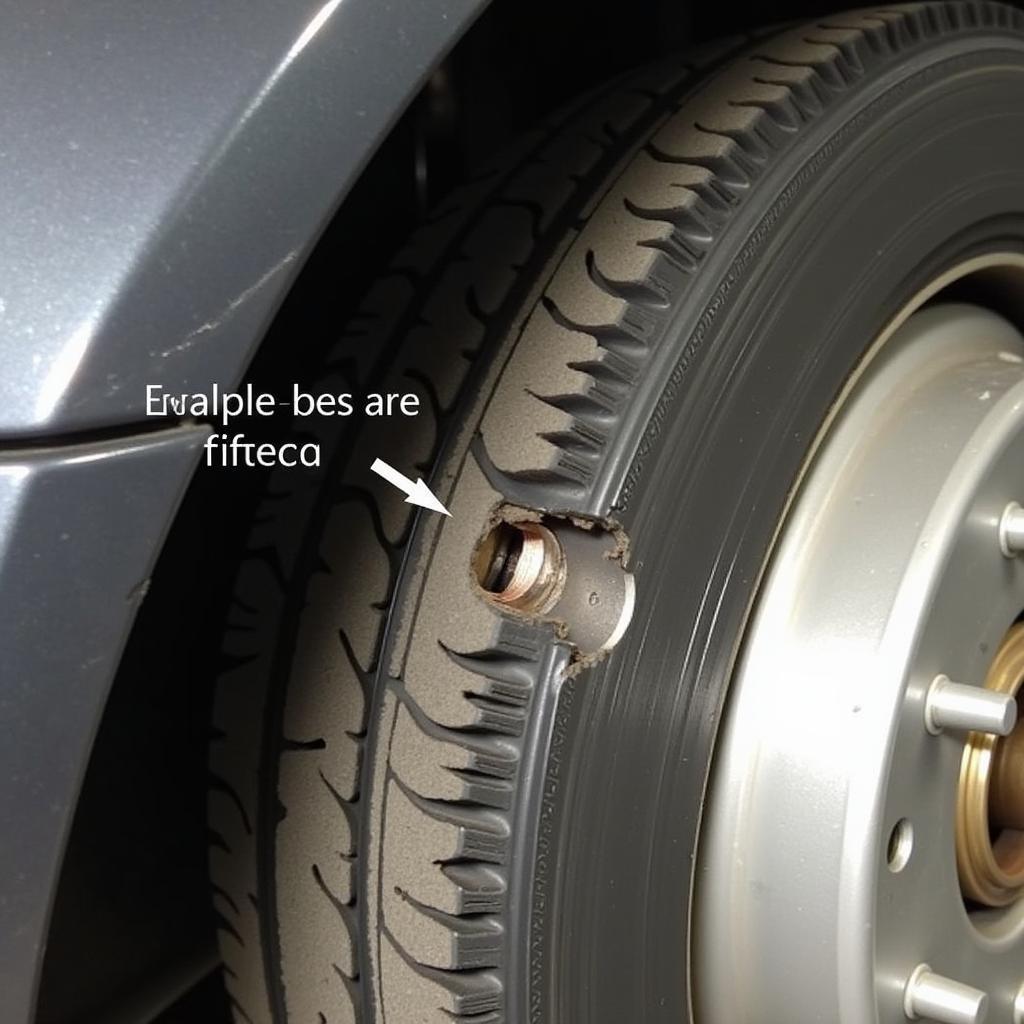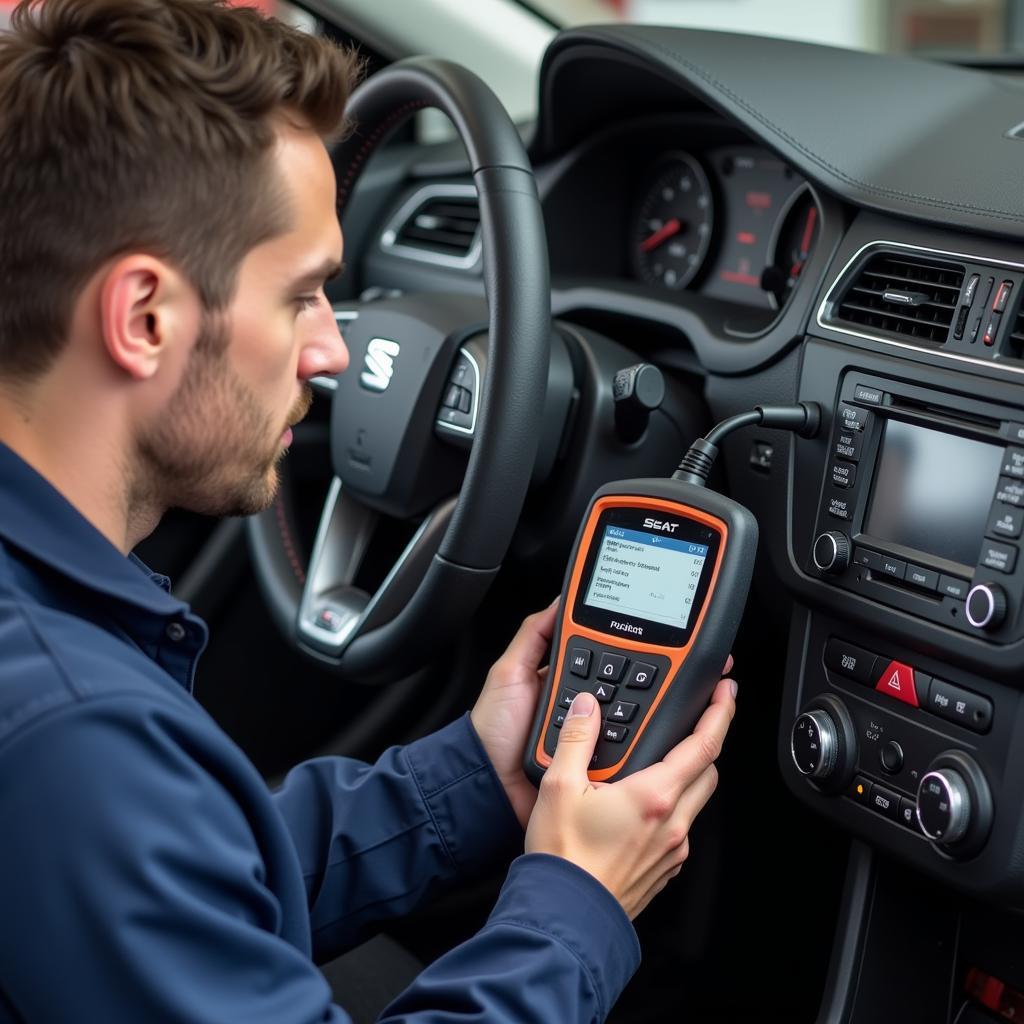If you’re driving an Audi A6, a brake pad wear warning light illuminating on your dashboard can be unsettling. This article will delve into the intricacies of this common issue, providing comprehensive information on why it occurs, what it means, and how to address it.
 Audi A6 brake pad wear warning light on dashboard
Audi A6 brake pad wear warning light on dashboard
Understanding Your Audi A6’s Brake Pad Wear Sensors
Modern vehicles like your Audi A6 are equipped with sophisticated sensor systems designed to monitor crucial components and alert you to potential issues. One such system focuses on the brake pads, which are vital for safe and effective stopping. These sensors, typically embedded within the brake pad material itself, play a critical role in alerting you about worn-down brake pads.
The sensors work on a simple principle:
- New Brake Pads: When your brake pads are new or have sufficient material, the sensor circuit remains closed.
- Worn Brake Pads: As your brake pads wear down over time, the sensor wire embedded within them eventually makes contact with the brake rotor. This contact completes the circuit, triggering the brake pad wear warning light on your dashboard.
 Close-up of worn brake pad wear sensor
Close-up of worn brake pad wear sensor
What Does the Audi A6 Brake Pad Wear Warning Light Mean?
The illumination of the brake pad wear warning light signals that your brake pads have reached a critical wear point and need immediate attention. It’s essential not to ignore this warning.
Why You Shouldn’t Ignore the Warning:
- Safety Hazard: Driving with severely worn brake pads significantly compromises your stopping distance, putting you and others at risk.
- Costly Repairs: Continuing to drive with worn brake pads can damage the rotors, leading to more expensive repairs.
What to Do When the Brake Pad Warning Light Comes On
- Don’t Panic: While the warning light requires immediate action, it doesn’t mean your brakes have failed entirely. Stay calm and prioritize safety.
- Assess Your Driving: If you’re on a highway or busy road, carefully navigate to a safe location as soon as possible.
- Inspect Your Brakes (If Possible): If you’re comfortable and it’s safe, visually inspect your brake pads. Look for significantly thin pads or metal-on-metal contact.
- Contact a Mechanic: Schedule an appointment with a qualified mechanic specializing in Audi vehicles to inspect and replace your brake pads.
Can You Drive with the Brake Pad Light On?
While you might be tempted to continue driving for a short period, it’s strongly advised against. Here’s why:
- Exacerbating Damage: Every time you apply the brakes with worn pads, you risk further damage to the rotors, potentially escalating repair costs.
- Safety Risks: Driving with compromised brakes significantly increases the risk of accidents due to increased stopping distances and reduced braking effectiveness.
How Long Can You Drive with the Brake Pad Light On?
There’s no definitive answer to this question. The duration you can drive with the brake pad light on varies depending on several factors, including:
- Driving Conditions: Frequent braking in city driving wears pads faster than highway driving.
- Driving Style: Aggressive braking habits accelerate wear.
- Brake Pad Quality: The type of brake pads you have impacts their lifespan.
 Mechanic replacing Audi A6 brake pads
Mechanic replacing Audi A6 brake pads
How Much Does It Cost to Replace Audi A6 Brake Pads?
The cost of brake pad replacement on an Audi A6 can fluctuate based on factors such as:
- Location: Labor costs vary by region.
- Audi A6 Model Year: Different model years may have different parts costs.
- Type of Brake Pads: Premium brake pads generally cost more.
Preventative Maintenance: Extending the Life of Your Audi A6 Brake Pads
- Smooth Braking: Avoid harsh braking whenever possible. Gradual braking reduces wear and tear on your pads.
- Lighten the Load: Carrying excess weight in your vehicle puts additional strain on the braking system.
- Regular Inspections: Schedule routine brake inspections with a qualified mechanic to catch potential issues early on.
Conclusion
The Audi A6 brake pad wear warning light is a crucial safety feature designed to keep you informed about the condition of your brakes. Ignoring this warning can lead to dangerous driving conditions and expensive repairs. Regular maintenance and prompt attention to warning signs are key to ensuring the optimal performance and safety of your Audi A6.
Remember: When it comes to your brakes, it’s always better to err on the side of caution. Consult a qualified mechanic to address any concerns or warning lights promptly.
FAQs
Q: What are the symptoms of worn brake pads?
A: Common signs include squealing or grinding noises when braking, a vibrating brake pedal, and a longer stopping distance.
Q: How often should I replace my Audi A6 brake pads?
A: There’s no set timeframe, as brake pad lifespan depends on driving habits and conditions. However, it’s recommended to have them inspected at least once a year or every 10,000-12,000 miles.
Q: Can I replace my Audi A6 brake pads myself?
A: While possible, it’s recommended to have brake pad replacement performed by a qualified mechanic to ensure it’s done correctly and safely.
Q: Are aftermarket brake pads as good as OEM pads for my Audi A6?
A: While aftermarket options may be more affordable, OEM (Original Equipment Manufacturer) brake pads are specifically designed for your Audi A6 and are generally recommended for optimal performance and compatibility.
Q: How can I reset the brake pad warning light after replacing the pads?
A: In most cases, the brake pad warning light will reset automatically after the brake pads and sensors have been replaced correctly. However, if the light persists, a mechanic can use a diagnostic tool to reset it.


